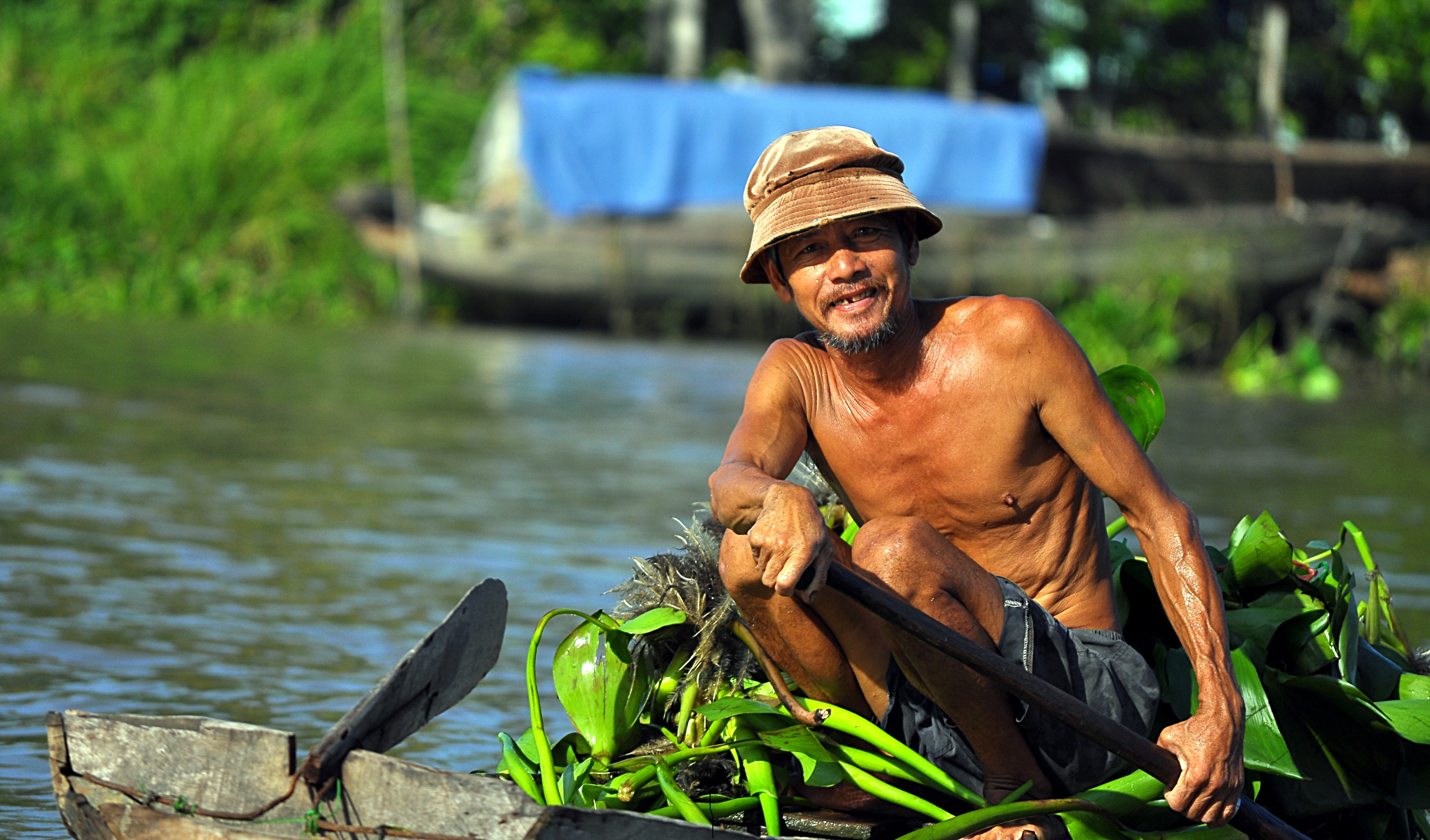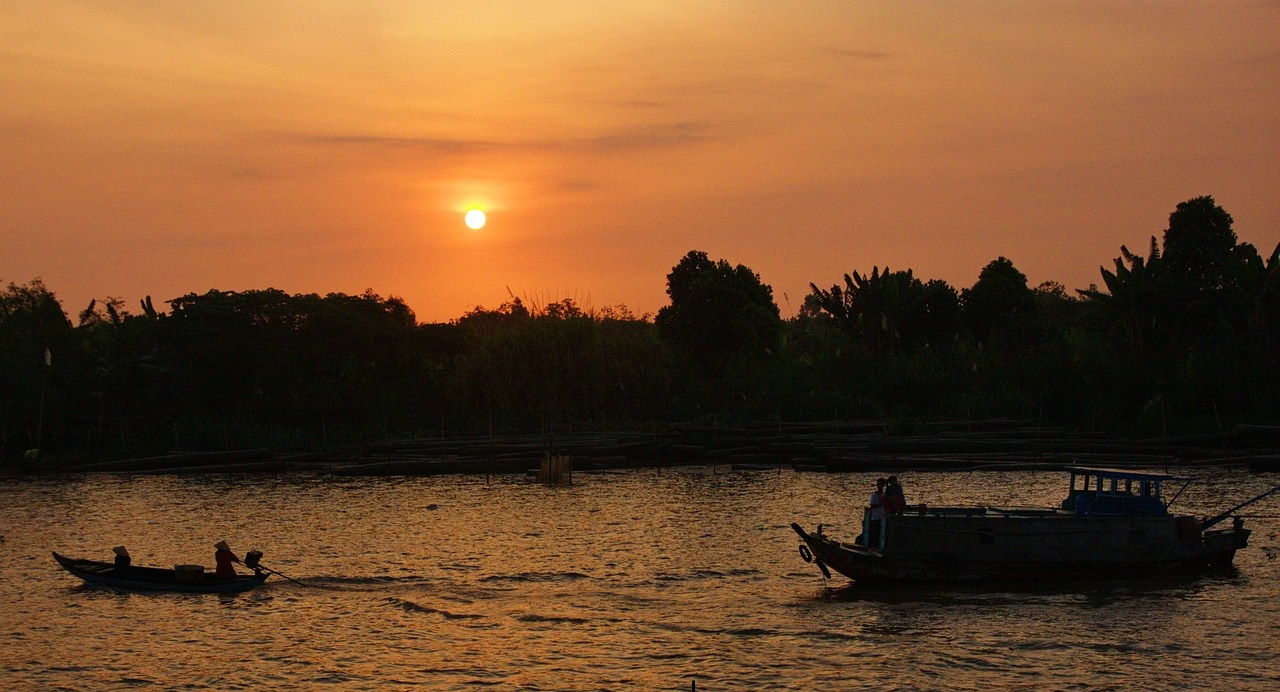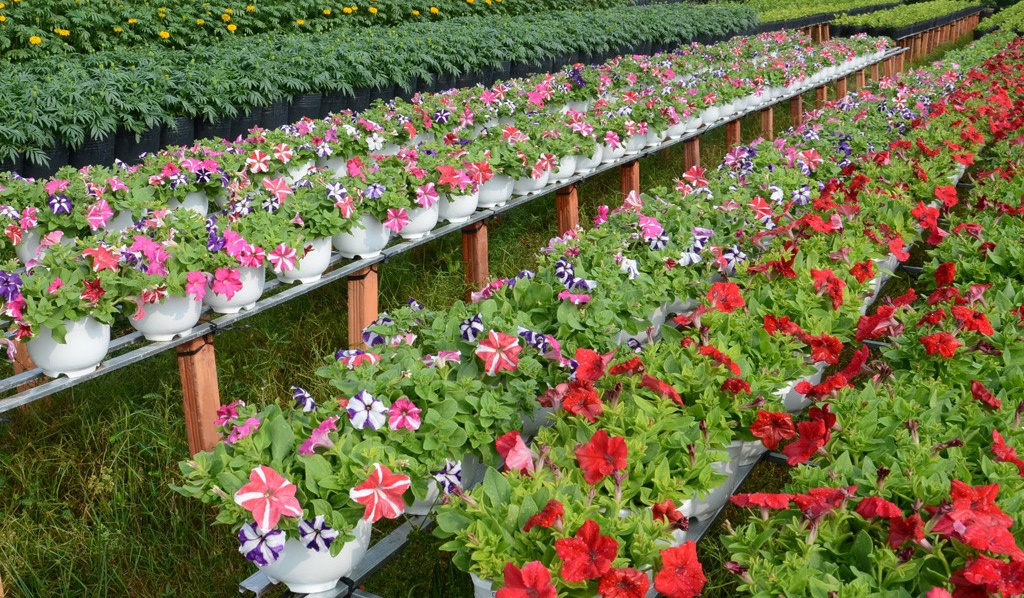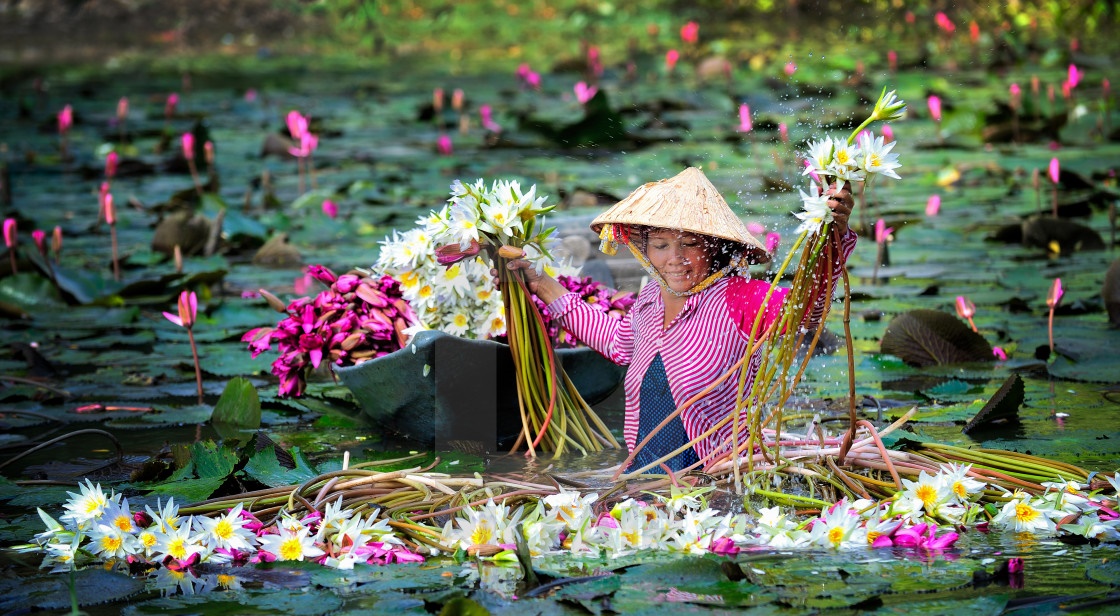By Lawrence Haywood, Mar 1, 2025
There is nothing that captures the essence of Southeast Asia quite like the Mekong River. It courses from China, down south through six different countries and the finale at the Mekong Delta in Vietnam is a marvel of the ancient world. It has seen life start, grow, rescind, and flourish along all 2,700 miles of its banks, along with the rise and fall of several civilizations. Some of its liveliest shores today can be found at its exit point into the South China Sea, the Mekong Delta, with its population nearing 18 million who all depend, directly or indirectly, on the continuing flow of its waters.
As with most areas of Southern Vietnam, the best time to visit the Mekong Delta depends entirely on how wet you would like to get. The two seasons are the dry and wet seasons, with little variation for much in between except the amount of rain, but both with positive and negative points that are worth exploring. Follow us in this Vietnam Travel Tips & Experiences guide to intensively explore!

People in the Mekong Delta
Farmers and tourists experience two different Mekong Deltas during the dry season; one sees comfortable heat, virtually no rain, and many opportunities for exploring, while one sees hot, dry weather in which crops refuse to grow (no prizes for guessing which is which). Nowadays, the Mekong Delta is becoming increasingly reliant on tourist money in order to stay afloat (pun intended) and increased tourist numbers during the dry season soften the blow for farmers, who are turning to more tourist-friendly adventures in order to cash in on Vietnam’s tourism boom.
There’s not much in between the highest and lowest average temperatures throughout the 6 months of the dry season. Average temperatures in the Mekong Delta during this time start at about 25°C (77°F) in January and peak at about 28°C (82°F) in April. That’s truly a pitiful amount of change over the course of half a year, but it means largely comfortable living for the locals, who have experienced their whole lives in this tiny window of heat and can thus pinpoint a single degree in temperature change. When talking about highest temperatures, April and May can get uncomfortably hot at 32°C (90°F), while the lowest can dip to 21°C (70°F) in January, warm enough for tourists but sure to set a few local bones shivering.
What rain? The measly 10% of annual rainfall that falls during the dry season makes it the most comfortable time to visit the Mekong Delta for tourists, who can enjoy long, uncovered boat rides around the floating villages without fear of reprise from the rain gods above. The heart of the wet season, between December and April, sees about 10cm of rain dropped over the course of 5 months. The two half-months that comprise the start and end of the dry season see quite a bit more; around 17cm each as the wet season tests the water, ready for the upcoming deluge.

Sunset in the Mekong Delta
You’ll see the sunniest of the Mekong Delta weather during the dry season, with highs of 6 hours per day fairly consistently over February, March, and April. Whether this is a good thing or not is down to your personal relationship with the sun, but if you have any hint of Vietnamese lineage in you, you’ll probably have to fight the urge to cover yourself from head-to-toe with protective wear, which is what most of the locals will be doing. The dip to 4 hours of sunlight per day will be greeted warmly by the locals, but, as far as the dry season goes, this only lasts for the months of November and December.
Quite frankly, and expectedly, the dry season is the best time to visit the Mekong Delta to dive into the rich tapestry of culture that has developed here over its many inhabited years. Late January to mid-March is the flower blooming season, where an already colorful land bursts further forth with yellow daffodils and pink orchids, especially noticeable at the Sa Dec Flower Village in Dong Thap Province.
The fruit season arrives in April and May, so this is a great time to visit the Mekong to get your hands on strange, tropical fruits for ridiculously cheap. This would also be a great time to visit the various bird parks or take a relaxing boat ride around the Ben Tre backwaters, or indeed, do most of the things mentioned in our "Things to do in Vietnam’s Mekong Delta".

Sa Dec Flower Village
• A hat of some description to ward off the sunlight and the few spits of rain you might experience.
• Suncream for those 6 hours of unadulterated UV rays per day.
• Lots of money. The dry season is tourist season and prices might rise around the floating markets accordingly (though not by much).
Mixed feelings by the locals towards the wet season stem from rising riverbeds bringing much more fruitful produce to the Mekong Delta, but also some intense rains that make life more difficult. Curiously, the rising water levels of the Mekong don’t worry them a bit, as floating villages can really just ride it out, and thus, the wet season is referred to as the ‘floating season’ in this part of the world, a rather amiable name that suggests no danger at all.

Flowers in the Mekong Delta
Carrying on the trend of monotonous temperatures in the Mekong Delta, the region sees pretty consistent 26°C (78°F) and 27°C (81°F) throughout the wet season. Compared to the rest of the country, including Ho Chi Minh City just 100km away, this is a very positive forecast as temperatures during the wet season in the rest of Vietnam often skyrocket to the mid-thirties. This means comfortable weather in the Mekong Delta with lows of about 23°C (74°F) and highs of about 32°C (90°F). It's great if you plan a Mekong Delta day tour during this period.
The remaining 90% of annual rain left to fall after the dry season comes spaced out over the next six months. May to November, like much of the rest of the south of the country, sees about triple the monthly output of rain between the end of the dry and the start of the wet seasons. 5cm in April becomes 17cm in May, which then only climbs exponentially higher (except for a quick lunch break during August), peaking at 28cm in September.
To put that in comparison, September sees 28 times the amount of rain that January sees, which changes a lot in the lives of locals. Flooding in Tra Vinh, Dong Thap, and other rural areas is common and the rising water level means more vegetables, more fish, and more merchandise to sell in the floating markets.
A fairly consistent 4 hours a day throughout the whole of the wet season does little to inspire tourists, but the market day can be a more drawn-out affair when locals don't have to dip for a shade under a boat's awning every 5 minutes.
While not as great a time to visit the Mekong Delta as the dry season, the wet season definitely has some unique charms that you won’t be able to experience at any other time of the year. To avoid tourists, this is when visits should be made to the floating markets, which serve mainly locals and at a lightning-quick pace, with many vendors yelling at each other and throwing produce between sampan boats before money is exchanged (a bit more carefully than the produce). The river comes alive during the wet season and tropical wonderlands like Ben Tre breathe a new breath of life in themselves; nothing comes closer to pure serenity than a quiet ride down the deserted backwaters of Ben Tre Province, with only the echoes of rain and wild birds as your soundtrack.
Once you’ve become a bit sick of the rain, you can head to any of the Mekong Delta’s inside attractions, namely its temples and museums. Temples abound in this religious land and come in many forms, be they Vietnamese Buddhist, Khmer Buddhist, or Western Christian. Can Tho Museum and a few others take you through the history of the Mekong from its earliest ages of settlement, through its various wars, and to life in the modern-day Mekong.
Check out our best tours to the Mekong Delta:

Discover the Floating Market in the Mekong Delta
• A raincoat or umbrella. It’s going to be very wet.
• A camera. Some of Vietnam’s crazy wet season scenes need to be seen to be believed, so try to capture the frenzy to show others.
• Light, waterproof clothes are the best to pack. It’s unlikely that you’ll be doing much walking between boat trips and temple visits, so sturdy flip-flops will probably do in terms of footwear.
The Mekong Delta, with its unique charm and vibrant culture, offers distinct experiences depending on the season. Whether you prefer the dry season’s sunny explorations and blooming flowers or the wet season’s lush landscapes and bustling floating markets, the Delta has something for everyone.
To truly immerse yourself in the beauty and culture of the Mekong Delta, consider joining one of our expertly curated tours. With Incredible Asia Journeys, you can choose from options! Book your unforgettable journey with us today and discover the wonders of the Mekong Delta!